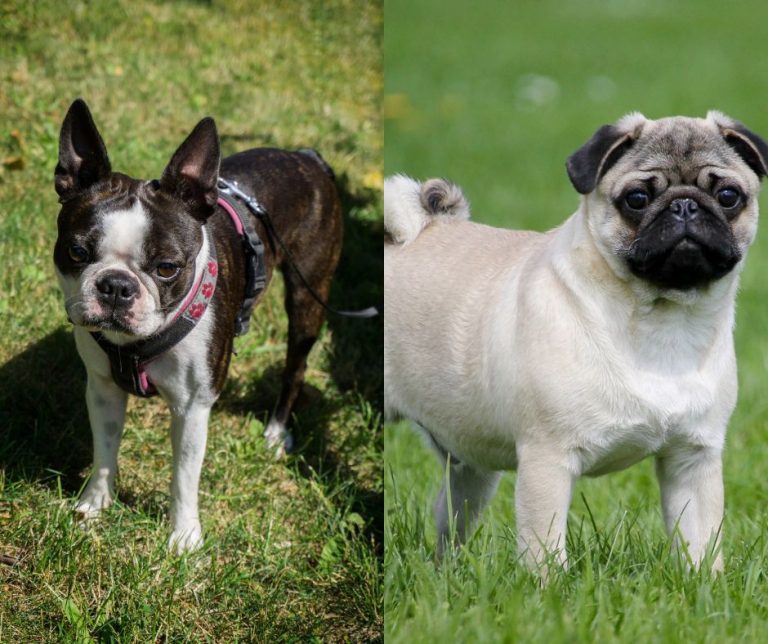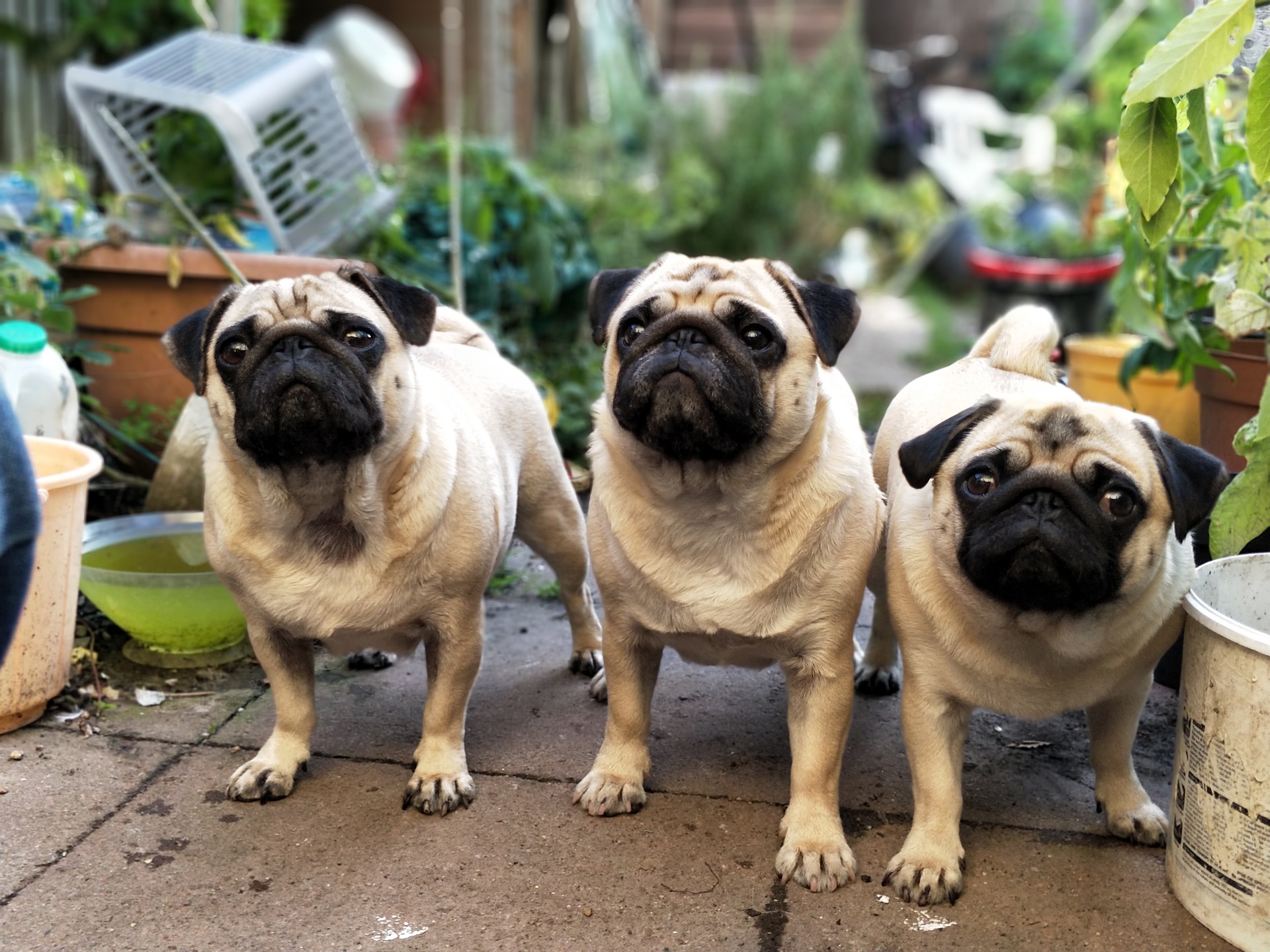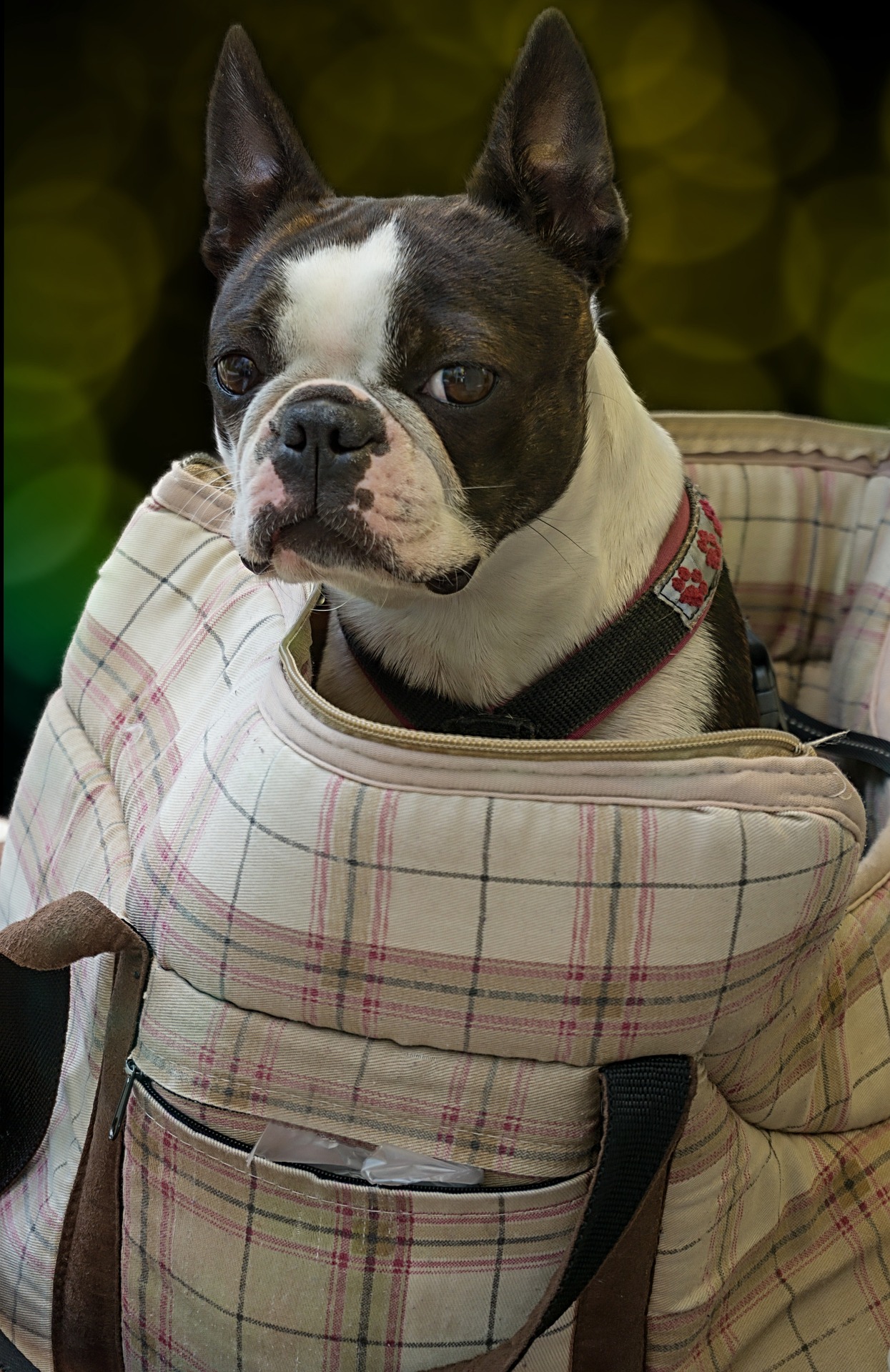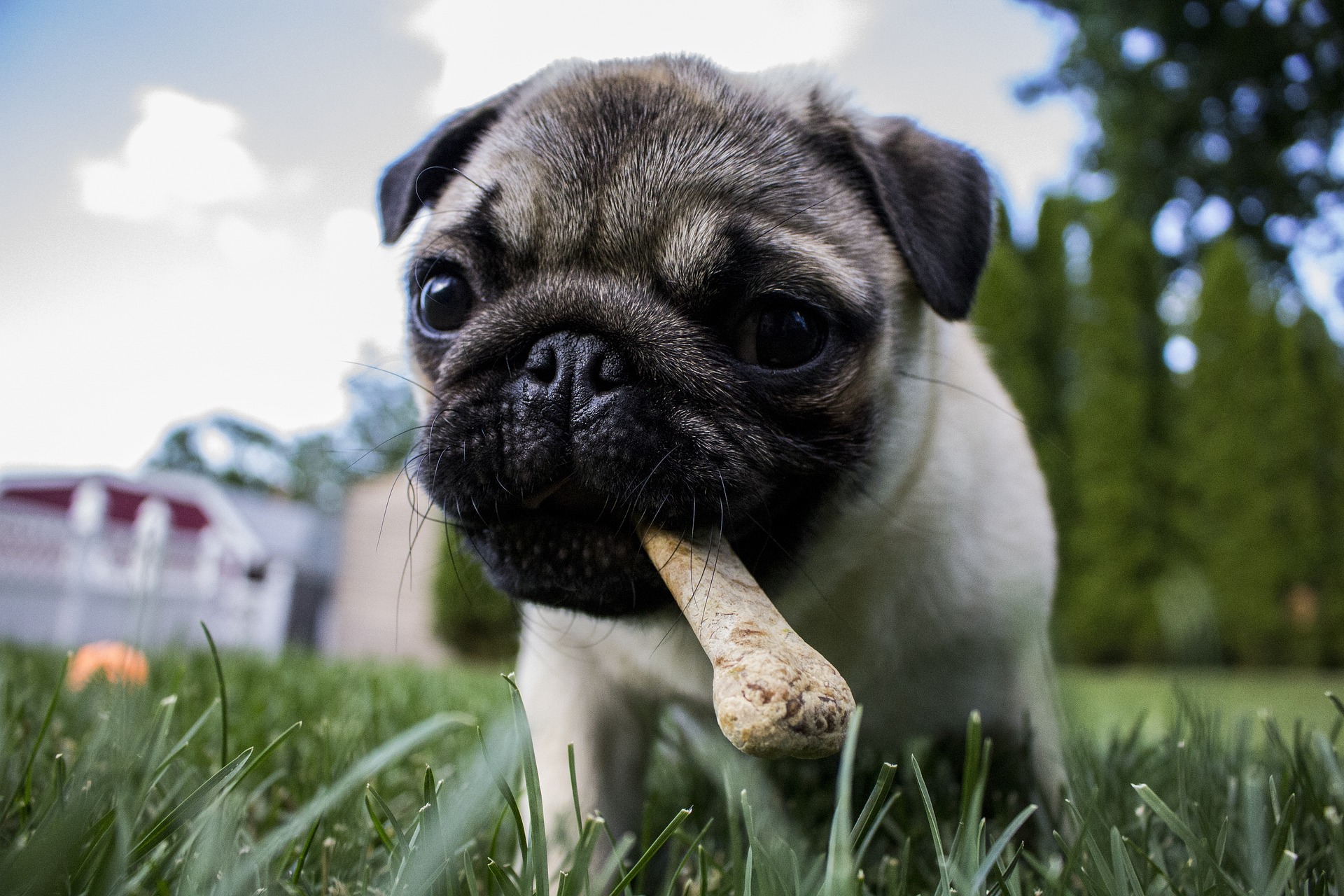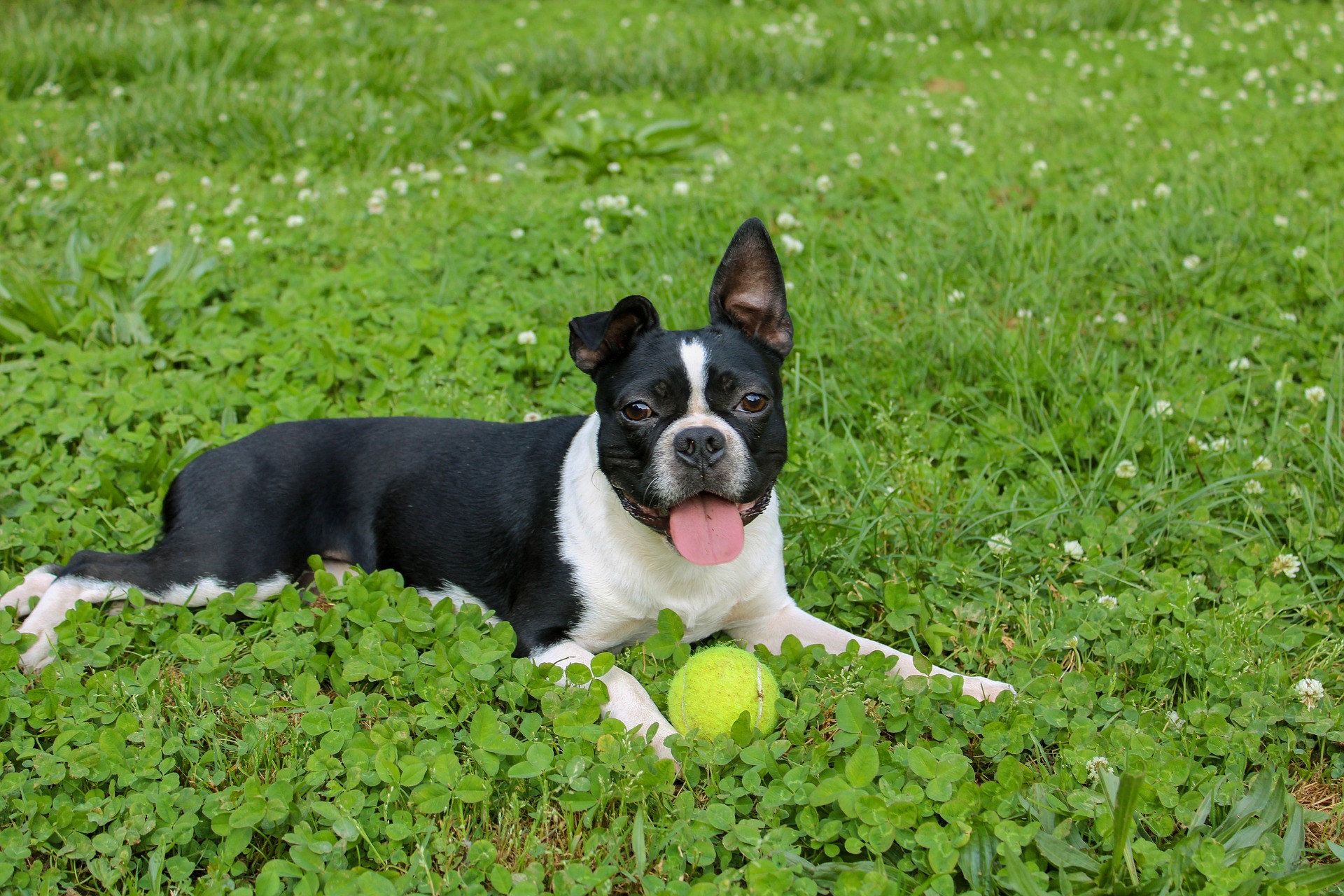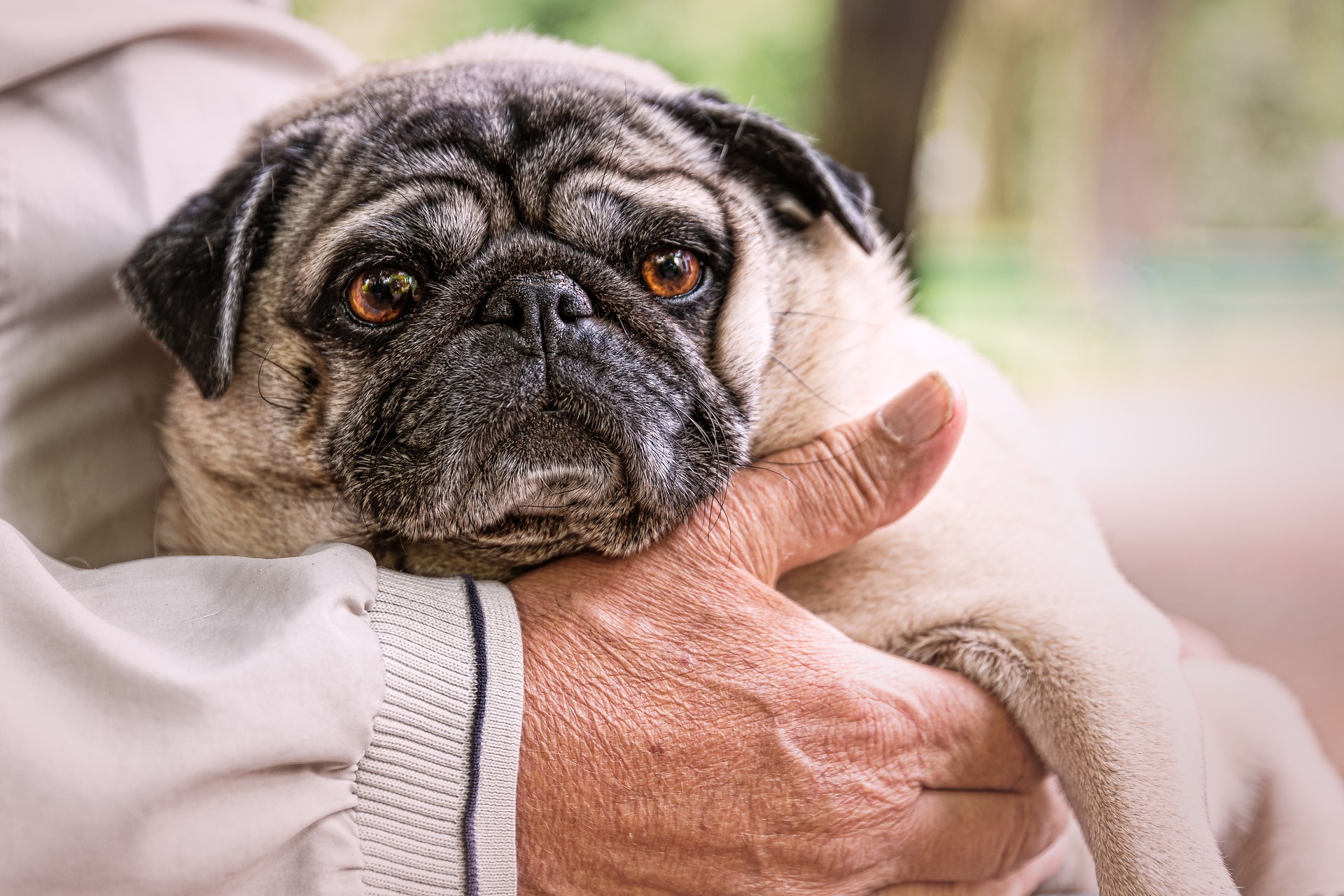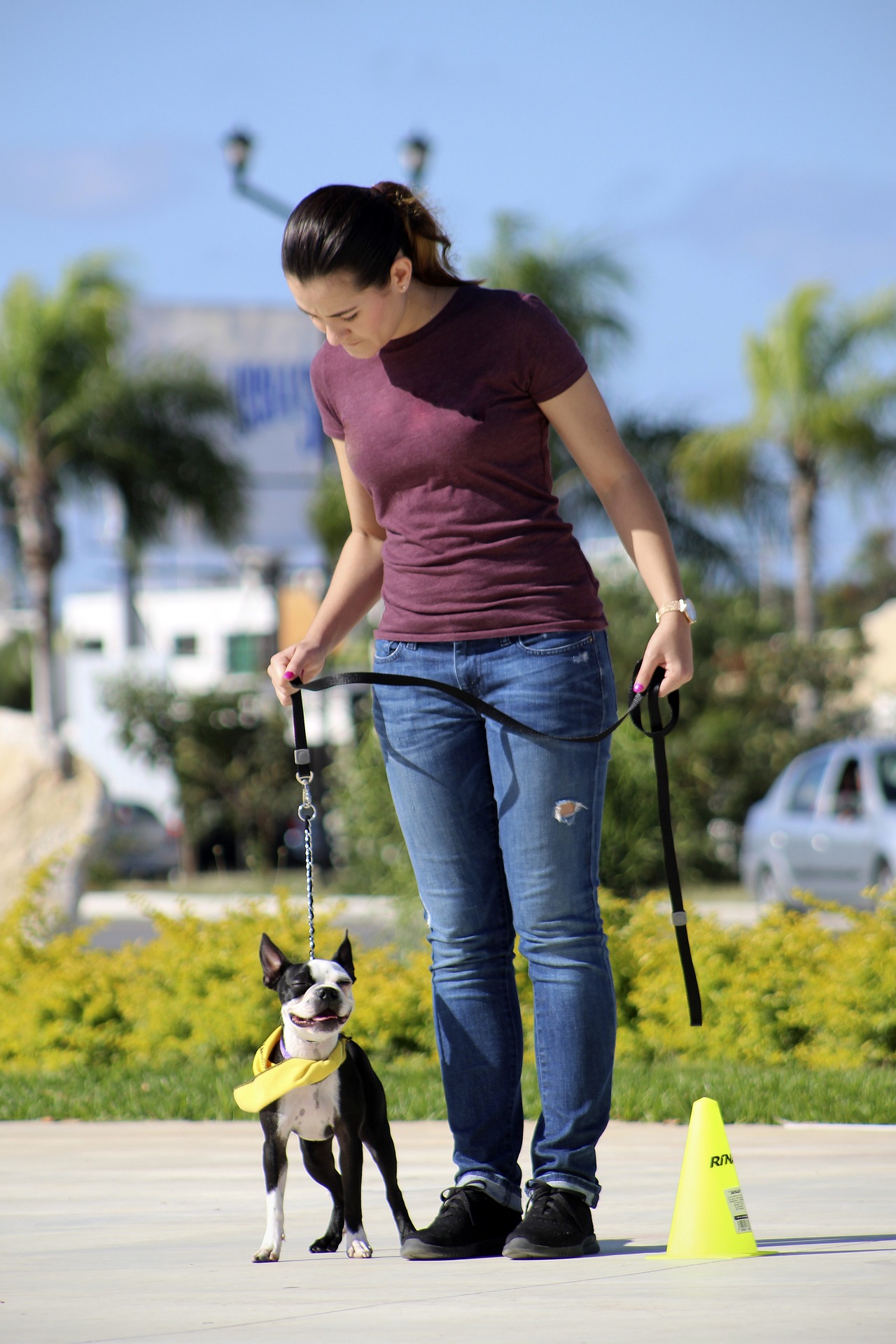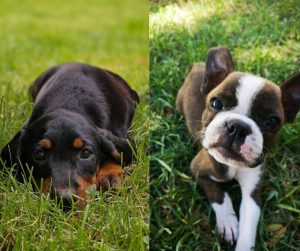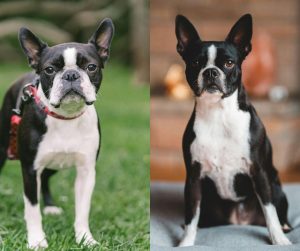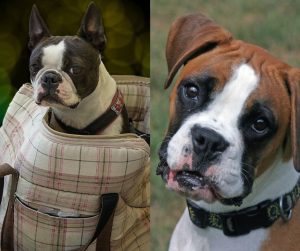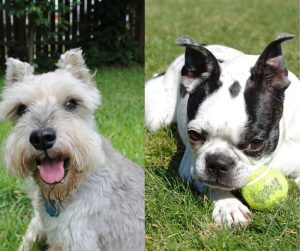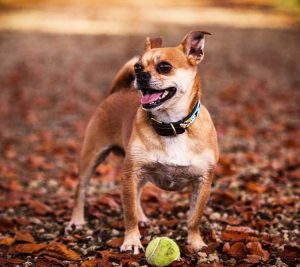When considering a small dog for companionship, one might find themselves comparing the Boston Terrier and the Pug. Both breeds are often adored for their compact size and expressive faces.
While both the Boston Terrier and the Pug each bring joy and laughter to their families, they feature distinct characteristics and histories that set them apart.
The Boston Terrier, with its tuxedo-like black and white coat, originated in the United States around the 1870s. It was intended to be both a companion and a competitive fighter, though the latter trait has since been bred out of the character of the dog. Pugs, on the other hand, have a long history dating back to ancient China, where they served as treasured pets to Chinese emperors, their distinctive wrinkles symbolizing good luck in Chinese lore.
Physically, the two breeds share the brachycephalic facial structure but differ in overall appearance and size. Boston Terriers are recognizable by their longer legs and muscular build, complemented by their short, smooth coat and alert ears.
In contrast, Pugs typically exhibit a stout and squarely proportioned body under their fine, glossy coat, with their charmingly wrinkled brows emphasizing their big, round eyes. Both breeds do require regular grooming and have specific health considerations to take into account due to their facial structure.
Each breed has its personality traits and care requirements that can fit into different lifestyles and preferences. Boston Terriers are known for their intelligence and friendly disposition, making them excellent for families or individuals seeking a lively and affectionate companion.
Pugs are equally charming, with a humorous attitude and a tendency to form strong bonds with their owners, suiting those who can appreciate their occasional stubbornness and desire for attention. So, let’s take a look at the Boston Terrier vs Pug dog breed comparison.
Key Takeaways
- Boston Terriers and Pugs both offer charming companionship but have distinct backgrounds and appearances
- Careful consideration is required for their health, grooming needs, and brachycephalic features
- Their friendly personalities and potential to bond with humans make them suitable for a variety of family settings
Origins and History
When one delves into the backgrounds of the Boston Terrier and the Pug, they’ll discover unique histories that underscore the breed’s characteristics and charm they bring into homes today.
Boston Terrier Origins
The American Kennel Club recognizes the Boston Terrier as a breed that emerged in the late 19th century. Its lineage begins in Boston, Massachusetts, where it was developed by crossing the now-extinct White English Terrier with a smaller English Bulldog. They are a product of American ingenuity, and post their inception, they quickly found favor across the United States.
Pug Origins
Differing from the American-made Boston Terrier, the Pug is an ancient breed with beginnings that date back to over 2,000 years ago in China. These little dogs with distinctive wrinkly faces were once favorites among Chinese emperors. The Pug’s popularity spread to Europe, gaining significant adoration during Queen Victoria’s reign in England.
Physical Characteristics
When deciding between a Boston Terrier vs Pug, their unique looks play a big part. They’re both adorable, but you’ll notice some distinct differences if you look closely. Both of them are part of the brachycephalic dogs group. But which one is your choice for a cutie pie?
Appearance
Boston Terriers are easily recognized by their sharp tuxedo-like markings: they have a sleek, black coat with a crisp white base that gives them their gentlemanly appearance. Their ears stand erect, and they have large, expressive eyes giving them a friendly face. Pugs, on the other hand, have a lovable face with deep wrinkles and big, circular eyes that are hard to miss.
Size and Weight
| Breed | Height | Weight |
|---|---|---|
| Boston Terrier | 15 to 17 inches | 12 to 25 pounds |
| Pug | 10 to 13 inches | 14 to 18 pounds |
Boston Terriers are generally taller and weigh a bit more on the scale compared to their Pug counterparts.
Coat and Colors
While a Boston Terrier puppy sports a tuxedo coat in black and white, they can also come in brindle or seal with white. Pugs have a smooth and glossy coat that typically comes in tan, silver, or black. They both have short coats but the Boston Terrier’s is a bit finer, while Pugs have a thicker double coat.
Temperament and Personality
Choosing between a Boston Terrier dog breed and a Pug is more than just a matter of looks; their individual personalities and temperaments are just as important. One might suit your lifestyle better than the other, depending on what kind of canine character you’re drawn to.
Boston Terrier Temperament
Boston Terriers are known for their lively and intelligent nature. These dogs carry themselves with a touch of elegance and are often referred to as the “American Gentleman” owing to their tuxedo-like coat. They possess a friendly demeanor that shines when they’re around their family or meeting new friends.
Their affectionate attitude and playfulness make them excellent companions for activities and bonding time. While generally well-mannered, sometimes they can show a stubborn streak, yet they typically aim to please.
- Character: Lively, intelligent, somewhat stubborn at times
- Behavior: Playful and affectionate, with a tendency to be friendly towards family and strangers alike
Pug Temperament
In contrast, Pugs often epitomize the term “loveable clowns.” These dogs are known for their playful and mischievous behavior, which can fill any room with laughter. Despite their clownish antics, they’re also incredibly loving and enjoy nothing more than cuddling up with their owners. Pugs can be quite stubborn too, but this adds to their charm as they navigate their world with an adorably serious expression plastered on their wrinkled faces. Their affectionate nature comes with a strong desire for human companionship.
- Character: Loving, playful, and comically stubborn
- Behavior: Clownish and affectionate, often seeking attention and interaction
Health and Lifespan
When considering a pet and companion dog, understanding the health and expected lifespan is as crucial as the breed’s personality. For the Boston Terrier and Pug, their well-being is often dictated by their status as brachycephalic breeds, meaning they have short noses and flat faces that can cause health challenges. Here’s what future pet owners should know.
Common Health Issues
Both Boston Terriers and Pugs can suffer from a series of health problems due to their brachycephalic dogs nature:
- Respiratory Issues: The short nasal passages can lead to breathing difficulties, especially under stress or in hot weather
- Eye Conditions: Protruding eyes can cause problems like corneal ulcers, cataracts, and cherry eye
- Weight Management: They are prone to obesity, which can exacerbate their health issues
- Joint Problems: Conditions such as hip dysplasia affect mobility and can be painful
- Dental Problems: Overcrowded teeth can lead to dental issues and require regular vet care
Specific to the breed, Pugs can be affected by Pug Dog Encephalitis, an inflammation of the brain unique to the breed, while Boston Terriers may suffer from deafness and allergies.
Life Expectancy
Both breeds enjoy fairly long lifespans for small dogs but with some nuances:
- Boston Terrier: Typically, they live about 11-15 years
- Pug: Generally, they have a lifespan ranging from 12-15 years
The precise longevity of an individual dog can vary based on factors like genetics, diet, and overall care, including regular vet check-ups to monitor for heart murmurs or nerve degeneration that could impact their quality of life. They thrive with loving attention, proper care, and regular moderate exercise that acknowledges their physical limitations. Pugs are not as healthy due to their brachycephalic breed nature. Yet, breeders have mixed them with other dog breeds to increase their lifespan.
Care and Grooming
Caring for a Boston Terrier puppy or a Pug puppy means understanding their unique needs to keep them happy and healthy. Their grooming and exercise requirements vary due to differences in coat, size, and energy levels.
Exercise Needs
Boston Terriers possess a higher energy level than Pugs, often looking for opportunities to play and burn off their energy. They benefit from daily walks and puzzle toys to keep them engaged. Pugs, while still playful, have more moderate exercise needs due to their size and potential for brachycephalic syndrome, which affects their breathing. Care should be taken to avoid overexertion, especially in hot or humid weather. Exercise for both breeds should include:
- Short to moderate daily walks
- Indoor playtime to stimulate their mind and body
- Avoidance of extreme temperatures, especially for Pugs
Grooming Requirements
When it comes to grooming, both breeds will shed, though neither has a double-coat which simplifies their grooming regimen. Boston Terriers are low maintenance; their short, sleek coat can be kept clean with regular brushing, about once a week. Pugs require more attention with their distinct wrinkles and a double layer of fur. They’ll need daily brushing to manage shedding and regular cleaning of facial creases to prevent infection. Both breeds will need:
- Regular brushing: Weekly for Boston Terriers, daily for Pugs
- Wrinkle care: Only for Pugs, to keep their skin clean and dry
- Nail trimming and dental care: Essential for preventing overgrowth and dental issues
Living Environment
When considering a Pug or Boston Terrier as a companion, their adaptability to your living space is a key consideration. Each breed thrives in environments that cater to their size, temperament, and needs.
Suitability for Apartment Living
Boston Terriers: They’re often hailed as excellent apartment pets thanks to their moderate size and relatively calm demeanor indoors. They do need daily exercise to stay happy, but they’re usually content in smaller living quarters as long as they get their dose of activity.
- Key Points for Boston Terriers in Apartments:
- Size: Ideal for limited space
- Exercise: Daily walks are sufficient
- Temperament: Calm indoors, making them great for close-quarter living
Pugs: With a laid-back attitude, Pugs are equally suitable for apartment living. Their smaller stature and less demanding exercise needs make them perfect for pet-friendly apartments. They love being close to their owners, which means they tend to do well in cozy indoor settings.
- Key Points for Pugs in Apartments:
- Size: Perfect for apartment constraints
- Exercise: Short walks and indoor play are adequate
- Temperament: Their relaxed nature fits apartment life well
Indoor and Outdoor Space
Boston Terriers: While Boston Terriers appreciate a good romp outside, they’re not overly demanding about outdoor space.
- Indoor Needs:
- They need a small yard or nearby park where they can stretch their legs and play
- Inside, they need a comfortable spot to relax and plenty of toys to keep them mentally stimulated
- Outdoor Needs:
- Comfy resting area
- Mental stimulation through toys or interactive play
Pugs: Pugs aren’t as energetic, so their outdoor space needs are minimal.
- Indoor Needs:
- A quick stroll or a small outdoor area to explore and do their business is usually enough
- Indoors, they crave comfort and warmth, often finding the coziest spot in the house to nap
- Outdoor Needs:
- Warm, comfy spaces for lounging
- Minimal stairs, as they can struggle with mobility due to their build
Training and Socialization
When it comes to raising a well-behaved family dog, training and socialization are the building blocks to success. Both Boston Terriers and Pugs are intelligent breeds known for their trainability and family-friendly nature, but they each have specific needs that are important to address through careful, positive training practices.
Behavioral Training
Behavioral training is essential to ensure that both Boston Terriers and Pugs grow into well-behaved companions.
- Boston Terriers are quick learners who benefit from training that is consistent and engaging. They respond well to positive reinforcement, like praise and treats, which helps in establishing a strong bond between them and their owners
- Starting training early is key, and keeping sessions short will maintain their interest
- On the flip side, Pugs may need a gentle nudge as they can be a bit more stubborn. Despite their laid-back attitude, they are eager to please and smart enough to pick up on commands
- Patience and a sense of humor will go a long way during training sessions with a Pug
Social Skills
Developing strong social skills is vital for any family dog, and both Boston Terriers and Pugs are generally good with children and make great family pets.
- Early socialization, which involves exposing them to various people, sounds, and experiences, can help prevent any fear or aggression issues from developing
- Boston Terriers typically mix well with other pets and people, their friendly nature shining through when meeting new friends
- Pugs also boast a loving temperament that makes them wonderful companions, though they might need a bit more reassurance during new encounters
- Ensuring a range of positive interactions from a young age will help both breeds mature into sociable, confident dogs
Family and Lifestyle Compatibility
When selecting a dog breed for your family, consider the breed’s interaction with children and other pets, and their role as a family member.
With Kids and Other Pets
Boston Terriers are friendly and lively, making them suitable playmates for children. Their energy levels demand regular playtime, ensuring lots of fun for active kids.
- They typically integrate well into a household with other pets, especially if socialized from a young age. However, it’s important to note that while they are not known to be aggressive barkers, their watchdog instincts might prompt them to alert you to unfamiliar sounds or visitors
On the other side, Pugs are known for their laid-back nature, exuding a calm presence around children and other family pets.
- They are less energetic than Boston Terriers, so they may not require as much playtime. This can be a plus for families looking for a more relaxed companion
- Pugs are also social creatures that usually get along well with other animals, but they do crave attention and can become jealous if they feel neglected
As a Family Member
The Boston Terrier typically thrives on human companionship and likes to be regarded as a central family member.
- Due to their need for interaction and attention, they fit best with families that can involve them in daily activities. Their alertness and protective nature could provide an extra sense of security as watchdogs for a family
In contrast, the Pug often becomes deeply attached to its family members, mirroring their emotions and atmosphere of the home.
- While they can adapt to the family’s energy level, Pugs are especially good companions for those seeking a sympathetic friend
- They demand love and attention and are happiest when they’re included as integral parts of the family unit. Pugs are not typically used as watchdogs given their friendly disposition towards strangers
Breed Comparisons
When considering the Boston Terrier and the Pug, prospective pet owners will find distinct differences as well as endearing similarities. Both breeds have carved out their own niches in the hearts of dog lovers everywhere, but it’s the nuances that might sway a decision.
Differences Between Breeds
Physical Appearance: The Boston Terrier often carries itself with a poise that’s earned it the nickname “American Gentleman,” thanks to its tuxedo-like coat.
- They usually weigh between 12 to 25 pounds with a sleek frame
- On the flip side, Pugs are more compact and robust, typically weighing in between 14 to 18 pounds, with a distinctive wrinkled face and curly tail
- Height and Stature: Boston Terriers stand taller at about 15 to 17 inches, while Pugs are shorter, with a stature of 10 to 13 inches. This difference in height and body can be quite apparent when they’re side by side
- Heritage: History suggests a richness to each breed; the Pug is an ancient breed, hailing from around 2,000 years ago. Boston Terriers are relatively newer, bred in the 19th century, with a lineage that includes the now non-existent White English Terrier and the English Bulldog, not the French Bulldog as some might think
Similarities Between Breeds
Temperament: Both breeds share a loving and affectionate temperament, making them excellent companions.
Their size categorizes them as small breeds, which often means they’re adaptable to various living situations. They’re also known for being particularly good with children, showcasing that loving nature.
- Grooming and Care: Though they differ in grooming requirements, the Boston Terrier is fairly low-maintenance while the Pug needs more attention due to its wrinkles
- Both breeds will require regular grooming to stay healthy and comfortable
- Social Traits: These dogs tend to form strong bonds with their families and thrive on interaction
- Neither breed has roots in fighting; instead, they were developed and refined to be sociable companion dogs

